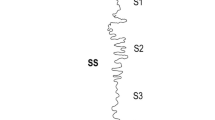Abstract
Background and objectives
Traditional cranial molding is an ancient practice prevalent in Ghana. In this work, we aimed at assessing mothers’/caregivers’ perspective and their knowledge on potential harm of cranial molding on neonates.
Methods
Two hundred and one (201) nursing mothers with babies aged 1–12 months were sampled in a cross-sectional study using questionnaires. We assessed the mothers’/caregivers’ reasons for cranial molding, their perceived benefits of this practice, and their knowledge about the potential harm this practice pose to babies.
Results
Sixty four percent (64%) of mothers confirmed they practice cranial molding on their babies either on their own or through the assistance of a caretaker. However, 72% of all mothers/caregivers did not know this practice has the potential to harm the baby in any way. Mothers’/caregivers’ reasons for this practice included the following: to achieve a more “beautiful” head shape, hasten the healing of the fontanelle, and limit head growth. There was a significant association between the mothers’/caregivers’ level of education and the practice of cranial molding (p value < 0.05). However, there was no association between head symmetry and cranial molding (p value > 0.05).
Conclusions and implications
Majority of mothers/caregivers were actively engaged in cranial molding on neonates but remain ignorant about the potential harm this practice could have on their babies. Mothers/caregivers therefore need to be educated about the potential harm posed by traditional cranial molding on neonates.




Similar content being viewed by others
References
Pogliani L, Mameli C, Fabiano V, Zuccotti GV (2011) Positional plagiocephaly: what the pediatrician needs to know. A review. Childs Nerv Syst 27(11):1867–1876
Graham T, Adams-Huet B, Gilbert N, Witthoff K, Gregory T, Walsh M (2019) Effects of initial age and severity on cranial remolding orthotic treatment for infants with deformational plagiocephaly. J Clin Med 8(8):1097
Laughlin J, Luerssen TG, Dias MS, Practice C on, Medicine A (2011) Prevention and management of positional skull deformities in infants. Am Acad Pediatrics
Renz-Polster H, De Bock F (2018) Deformational plagiocephaly: the case for an evolutionary mismatch. Evol Med Publ Health 2018(1):180–185
Clarren SK, Smith DW, Hanson JW (1979) Helmet treatment for plagiocephaly and congenital muscular torticollis. J Pediatr 94(1):43–46
Zonenshayn M, Kronberg E, Souweidane MM (2004) Cranial index of symmetry: an objective semiautomated measure of plagiocephaly. J Neurosurg Pediatr 100(5):537–540
Heyborne KD (2017) A systematic review of intrapartum fetal head compression: what is the impact on the fetal brain? Am J Perinatol Rep 7(02):e79–e85
Lacourse N (2014) Artificial cranial deformation in Maya Society: cultural dimensions and possible implications for neurological and craniofacial development and function (Doctoral dissertation, INSTITUTE OF ARCHAEOLOGY).
Al-Shaqsi SZ, Rai A, Forrest C, Phillips J (2019) Standardization of cranial index measurement in sagittal craniosynostosis. J Craniofac Surg 30(2):366–369
Hjorth-Hansen A, Salvesen Ø, Engen Hanem LG, Eggebø T, Salvesen KÅ, Vanky E, Ødegård R (2018) Fetal growth and birth anthropometrics in metformin-exposed offspring born to mothers with PCOS. J Clin Endocrinol Metab 103(2):740–747
Amponsah S, Torto BA, Badu-Nyarko SK (2018) Ghanaian mature students’ motivation to pursue degree programmes through distance education. Int Rev Educ 64(5):585–606
Cartwright CC (2002) Assessing asymmetrical infant head shapes. Nurse Pract 27(8):33–39
Montandon D (2017) Head shape configuration over the centuries. J Craniofac Surg 28(8):1890–1900
Cervos-Navarro J, Lafuente JV (1991) Traumatic brain injuries: structural changes. J Neurol Sci 103:3–14
Morrison G, Fraser DD, Cepinskas G (2013) Mechanisms and consequences of acquired brain injury during development. Pathophysiology. 20(1):49–57
Seshie-Nasser HA, Oduro AD (2016) Delayed primary school enrolment among boys and girls in Ghana. Int J Educ Dev 49:107–114
Fatusi A, Adedini SA, Mobolaji JW (2020) Trends and correlates of girl-child marriage in 11 West African countries: evidence from recent demographic and health surveys. Available at SSRN 3537080
Obladen M (2012) In God’s image? The tradition of infant head shaping. J Child Neurol 27(5):672–680
Acknowledgments
We thank all national service persons at the Department of Physiology and the nurses of the Pediatric Unit at the Cape Coast Teaching Hospital and the Cape Coast Metropolitan Hospital who helped us during data collection. We also thank Mr. Isaac Boating of the Department of Physiology, School of Medical Sciences, for helping us to correct typos and making figures.
Author information
Authors and Affiliations
Corresponding author
Ethics declarations
Conflict of interest
None
Additional information
Publisher’s note
Springer Nature remains neutral with regard to jurisdictional claims in published maps and institutional affiliations.
Lay summary
In Ghana, most mothers mold their babies’ head traditionally from birth until 1 year after birth, for various reasons which we set out to identify. We found that the main reasons for this practice are as follows: achieve a more “beautiful” head shape, “hasten” “healing” of fontanelle, and limit head growth.
Supplementary Information
ESM 1
(DOCX 21 kb)
Rights and permissions
About this article
Cite this article
Djankpa, F.T., Ulanja, M.B., Ola, E. et al. Cranial molding on neonates in Ghana: mothers’ perspective and their knowledge on potential harm to babies’ brain. Childs Nerv Syst 37, 1703–1711 (2021). https://doi.org/10.1007/s00381-020-05001-x
Received:
Accepted:
Published:
Issue Date:
DOI: https://doi.org/10.1007/s00381-020-05001-x




